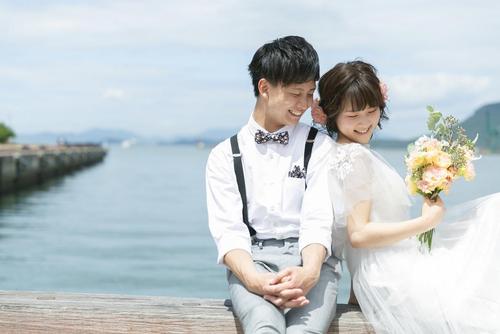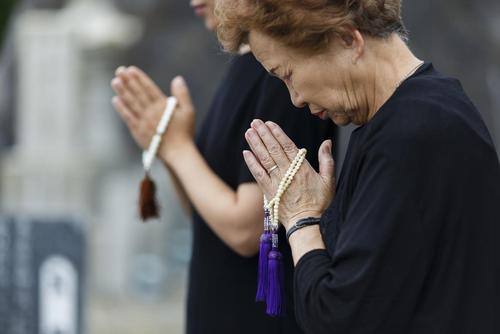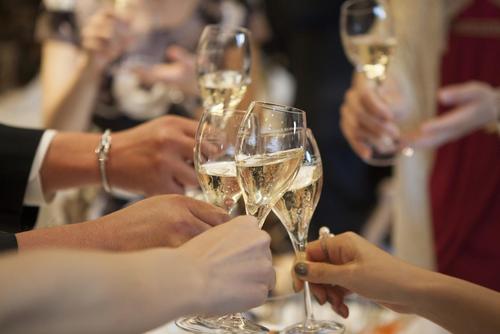When it comes to etiquette for weddings, funerals, and other ceremonies, rudeness is essential, but do you know what the word "weddings, funerals, and other ceremonies" actually means?
Many people may understand "marriage" and "funeral," but remain unclear about "crown" and "festival."
In addition, having a correct understanding of funeral and wedding etiquette, which you will often experience, will be useful in your real life.
This time, we will explain the meaning of ceremonial occasions and the etiquette for funerals and weddings.
What are ceremonial occasions?

Ceremonial occasions are a collective term for four traditional ceremonies: coming-of-age ceremony, wedding, funeral, and ancestral festival.
Let me explain each one.
"Kanmuri" is a celebration of life's milestones
The word "kanmuri" is used to refer to celebrations that mark turning points in life, in reference to the "Genpuku" ceremony, which has been held since the Nara period, where men are celebrated by being crowned with a crown.
In modern times, celebrations such as Shichigosan, Coming of Age Ceremony, and Kanreki (60th birthday) are considered "kanmuri" (crowns). Birth, conferment of an award, and receiving a prize are also considered "kanmuri" (crowns).
"Kon" means wedding, and "sou" means funeral
A wedding is an event in which people get married and become husband and wife, and events such as the betrothal ceremony and wedding reception are also considered "marriage."
A funeral is an event related to a person's death, and includes wakes, memorial services, and Buddhist memorial services.
"Festival" is a turning point in the year to worship ancestors
All acts of worshiping ancestors are considered "festivals." Since the purpose of these festivals is to pray for the prosperity of the family, they include not only memorial services and Obon, but also New Year's, Setsubun, and Tanabata.
Funeral Etiquette

The most important etiquette at a funeral is dress code, condolence money, and attendance.
Dress code for funerals
If you hear of a death and rush to the wake after work, it is fine to wear casual attire.
Stick to subdued colors whenever possible and avoid wearing flashy colors.
There was a belief that wearing mourning clothes at a wake was rude as it seemed to anticipate misfortune, but nowadays it is acceptable to wear mourning clothes to a wake.
As a general rule, when attending a funeral or memorial service, you should wear mourning attire.
·male
A dark suit with a white shirt, black tie, socks, and black shoes.
Cufflinks are fine, but if you don't have a tie clip, it's a good idea.
·woman
A black suit or dress, black stockings and shoes. Shoes and bags should be made of cloth if possible. If they are made of leather, simple, matte leather is fine.
Keep your hair neatly tidy and limit your accessories to simple pearls and a wedding ring.
About condolence money
Condolence money is brought when attending either the wake or the funeral (memorial service). The inscription on the envelope should be in accordance with the religion of the deceased or the bereaved family.
If for some reason you are unable to confirm the religion, any religion is acceptable as long as it is in front of the spirit.
Buddhist style
The envelope for the condolence money should read "Gokoden" or "Gokoryo." Please note that "Gobutsuzen" and "Gobutsuzen" are used for memorial services after the 49th day.
・Christian ceremony
The inscription on the envelope is "Flower Fee" for Protestants and "Mass Fee" for Catholics.
Condolence envelopes with lotus flowers on them are used in Buddhist ceremonies, so please do not use them in Christian ceremonies.
・Shinto ceremony
The envelope must be inscribed with "Tamagushiryo" or "Sakakiryo," and condolence envelopes with lotus flower designs cannot be used.
Manners when attending a funeral
Being late is strictly prohibited, so please make sure to arrive at the venue earlier than scheduled.
If you need to leave for some reason, sit as far back as possible and leave quietly once you have finished offering incense.
When offering condolences to the bereaved family, do so at the wake, not at the funeral or memorial service. It is considered good manners to be considerate of other attendees and not to spend too much time speaking.
Offer your condolences in a low voice and modestly, and always end with a bow.
If you can't find the right words, just nodding with your eyes is fine.
Wedding Etiquette

At weddings, pay particular attention to your invitation responses, attire, and wedding gifts.
Etiquette for replying to invitations
・Reply by the deadline
If the reply postcard does not arrive, the bride and groom will become anxious and the start of concrete preparations will be delayed.
When you receive an invitation, even if you have plenty of time before the deadline, mail your reply postcard within two or three days.
If I can't reply immediately due to work commitments or other reasons, I will contact you by phone and let you know when I will be able to reply.
・Correct entry
Please fill out the form using a black brush or fountain pen. If you are not good at writing, you can use a ballpoint pen.
Please cross out the "line" in the addressee's name with a neat double line and rewrite it as "sama."
Circle the "attend" part and cross out any honorifics referring to yourself, such as the "go" in "attend," the entire "goseisen," the "goyoshi" in "goyoshi name," and the "go" in "goshoumei."
・Add a message
Be sure to add a message in the message section or in the margin, such as congratulations or thank you for the invitation.
Wedding dress etiquette
Women generally attend in dresses, so choose a dress that does not violate etiquette.
・Avoid white and overly unique colors and patterns
The main focus of a wedding is the bride. No one other than the bride should wear white. If you are wearing a black dress, you should add some glamour with accessories and small items to avoid giving the impression of a funeral.
Also, unique colors, patterns, and designs that draw attention will make you stand out more than the bride and are therefore rude.
The difference between day and night
Dress style etiquette varies depending on the time of day.
At night, some exposure and sparkly materials are OK, but during the day, less exposure and shiny materials are a no-no.
・Sandals and bare feet are not allowed
In formal occasions such as weddings, it is best to avoid revealing your toes or wearing no stockings.
Gift-giving etiquette
The wedding gift should be broken down into the cost of the meal, the cost of the gifts, and a gift for celebration.
Here is an example of a gift amount for a meal of 15,000 yen and a gift of 5,000 yen.
Taking into consideration the relationship with the bride and groom, the going rate is 10,000 yen for a congratulatory gift and 30,000 yen for a gift of money if the person is a friend, and 10,000 to 30,000 yen for a congratulatory gift and 30,000 to 50,000 yen for a boss or other person.
Choose a gift envelope that matches the amount of money you are giving. Generally, the amount of money it is designed for will be clearly stated on the product, so please check before purchasing.
The mizuhiki used on gift envelopes is a "musubikiri" style that cannot be untied once tied, and the "bow knot" style, which is considered auspicious no matter how many times it is tied, is not used for wedding gifts.
summary
"Kon" in kankonsousai means marriage, and "sou" means funeral. "Kan" means celebration of a turning point in life, and "matsuri" means a turning point in the year to worship ancestors and pray for the prosperity of the family.
Once you enter the workforce, you will have many opportunities to attend funerals and weddings. It is important to be aware of basic etiquette so as not to be rude.
For funerals, basic etiquette regarding attire, condolence money, and attendance is essential, while for weddings, basic etiquette regarding replying to invitations, attire, and gift money is essential.
Aim to become a wonderful adult who can properly follow etiquette for weddings, funerals, and other ceremonies.
This article has been partially re-edited by KARUTA from an article originally published on "Nihongo Biyori."
Any unauthorized reproduction or use of the contents, text, images, illustrations, etc. of this website is strictly prohibited.
